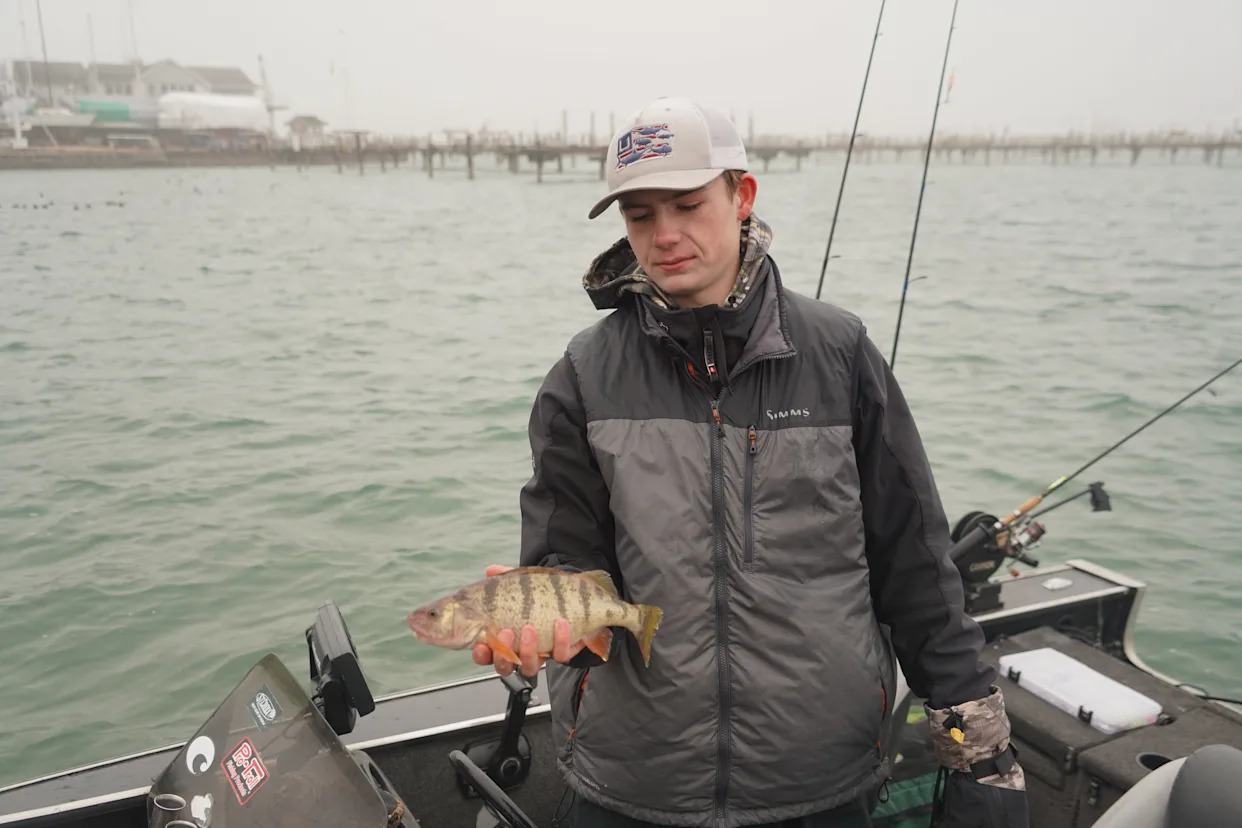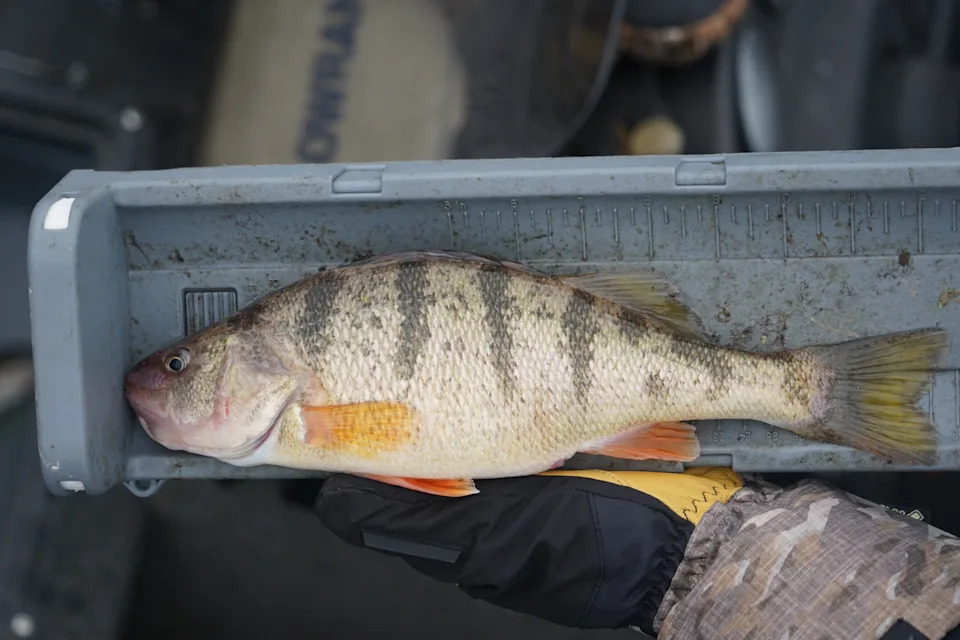
Yellow perch are showing signs of annual reproduction and survival of young fish in the Wisconsin waters of Lake Michigan, although at much reduced numbers than 30 years ago, according to a Department of Natural Resources assessment.
The 2025 spring spawning assessment in Lake Michigan off Milwaukee yielded 159 perch, said DNR fisheries biologist Aaron Schiller, similar to the 168 in 2024 and 214 in 2023 but only about 1% as many as were netted in the same work in the mid-1990s.
Importantly, analysis of the fish caught in recent spawning studies shows at least some from each year class over about the last decade, said Aaron Schiller, DNR fisheries biologist.
This survival of young, or recruitment, is critical to sustain any animal population. It's been watched especially closely in Lake Michigan perch since the species began a precipitous decline in the 1990s after the arrival of invasive mussels.
In the DNR's 2024 spawning assessment fish from each year class from 2016 through 2021 were documented, according to an agency report (fish born in 2022 and after were too young and small to spawn or to be sampled with the gear used for the study).
The 2016 year class was the strongest for many years and the 2021 year class formed a substantial portion of the 2024 catch.
Aging and other analysis of perch caught in 2025 has yet to be completed.
But Schiller said he was optimistic with the recent results, especially in light of spawning assessments in 2017 and 2018 that resulted in less than 10 fish caught.
"Hopefully, an increase in spawner biomass and some favorable weather trends will help continue the trend of increasing abundance of yellow perch in the Milwaukee area," Schiller said.
Based on angler reports, perch numbers have increased slightly in the waters off Racine and Kenosha, too.

The Lake Michigan perch population along with other native fish such as the lake whitefish have suffered from the effects of aquatic invasive species, especially the quagga mussel.
The mussel, present in Lake Michigan since at least the early 1990s, is a filter-feeder that removes vast quantities of plankton from the water. It is found on hard and soft substrates of the lake and at depths from relatively shallow to more than 400 feet, according to researchers.
The quagga mussel is linked to a drastic decline in native zooplankton species and the alteration of the lake's food web.
"Quagga mussels have been the biggest change in the Great Lakes since the Ice Age," said Jason Smith, a fisheries biologist with the Sault Tribe of Chippewa Indians in Michigan, in the documentary "All Too Clear" by Canadian filmmakers Yvonne Drebert and Zach Melnick.
The changes have meant less food for larval fish and a significant drop in survival of young perch.
As DNR assessments showed the recruitment problems, the agency took action in 1996 to close the commercial perch fishery, reduce the sport daily bag limit to five perch and prohibit perch fishing during the species' spring spawning period on the Wisconsin waters of Lake Michigan.
The measures did not spur a large recovery but likely helped the perch avoid an even more severe decline.
Yellow perch have fared much better in the more productive waters of Green Bay. The DNR continues to allow commercial fishing for perch as well as a higher daily bag limit for sport anglers in the bay.
Creel survey data highlights the difference in the perch populations in Green Bay versus Lake Michigan.
Sport anglers harvested 195,856 fish in 2024, according to DNR reports, but 192,061 were caught in Green Bay and 3,795 in Lake Michigan.
And the numbers are a shadow of the sport catch before quagga mussels altered the lake's food web. In 1988, for example, sport anglers caught 869,164 perch in Lake Michigan, including 133,328 in Kenosha, 213,163 in Racine and 408,438 in Milwaukee counties alone.
But there are signs of hope, including the unbroken string of detectable year classes and periods of good fishing for sport anglers.
One occurred in late December 2024 in the Milwaukee harbor. Dozens of boats took advantage of unusually warm weather and no ice cover to launch and fish for perch over a period of several days.
Schiller said the perch were likely concentrated in the harbor to utilize a food source.
"It's good to see some recruitment, for sure," Schiller said. "And the perch that get past the bottleneck early in their lives grow pretty fast after that."
As an example, the 2021 year class perch caught at age 3 in 2024 averaged 9 3/4 inches in length, according to DNR data. The average includes both sexes - females grow faster than males - so some of those 3-year-old perch were longer than 10 inches.
In the 2025 Salmon-A-Rama fishing tournament on Lake Michigan held in July, the perch division was won by Khris Radke with five perch that averaged 14.2 inches in length.
Fish entered by the top five finishers in the event averaged 13.7 inches in length. They were all registered in Milwaukee or Racine.
This article originally appeared on Milwaukee Journal Sentinel: DNR surveys show some annual recruitment of the valuable fish species






Comments